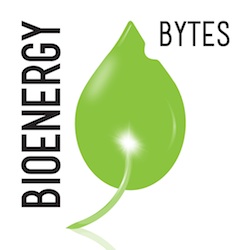 Renewable Energy Group’s (REG) Board of Directors has authorized a review of strategic alternatives for its Life Sciences subsidiary, which is developing renewable chemicals and fuels using a proprietary microbial fermentation process. The strategic review process will be comprehensive and focused on the best path to maximize shareholder value. Over the last three years under REG ownership, the Life Sciences subsidiary has advanced its technology, increased the number of potential products that can be made from the technology and expanded its intellectual property portfolio.
Renewable Energy Group’s (REG) Board of Directors has authorized a review of strategic alternatives for its Life Sciences subsidiary, which is developing renewable chemicals and fuels using a proprietary microbial fermentation process. The strategic review process will be comprehensive and focused on the best path to maximize shareholder value. Over the last three years under REG ownership, the Life Sciences subsidiary has advanced its technology, increased the number of potential products that can be made from the technology and expanded its intellectual property portfolio.- The Bio-Industrial Process Research Centre at Lambton College (Ontario) and Western Sarnia-Lambton Research Park have completed a techno-economic modelling feasibility study. The study identified suitable high value-added products and determined business scenarios where a beet-based sugar value chain could be re-established economically within southern Ontario. In these scenarios, after a 50-year absence from the Ontario Agricultural sector, sugar beets would be grown, harvested and processed in Ontario with the products and co-products used for the food, feed and industrial biochemical markets. Based on the positive results of the techno-economic modelling study, the Ontario Innovative Sugarbeet Processors Cooperative (OISPC), a farmer cooperative, has been formed.
- In Finland, UPM Biofuels has joined the below50 coalition to promote the most sustainable fuels that can achieve significant carbon reductions – and scale up their development and use. Below50 is one of the newest initiatives in sustainable fuels, and it brings together forward-thinking businesses with the World Business Council for Sustainable Development (WBCSD), Roundtable for Sustainable Biomaterials (RSB) and Sustainable Energy for All (SE4ALL). The initiative was launched in June 2016.
- The U.S. Department of Energy’s (DOE) Office of Energy Efficiency and Renewable Energy has announced AquaHarmonics as the winner of the Wave Energy Prize – which comes with a $1.5 million grand prize. CalWave Power Technologies and Waveswing America were awarded second and third place, respectively, with $500,000 and $250,000 in cash prizes. With more than 50 percent of the U.S. population living within 50 miles of coastlines, there is vast potential to provide clean, renewable electricity to communities and cities across the United States using wave energy.

